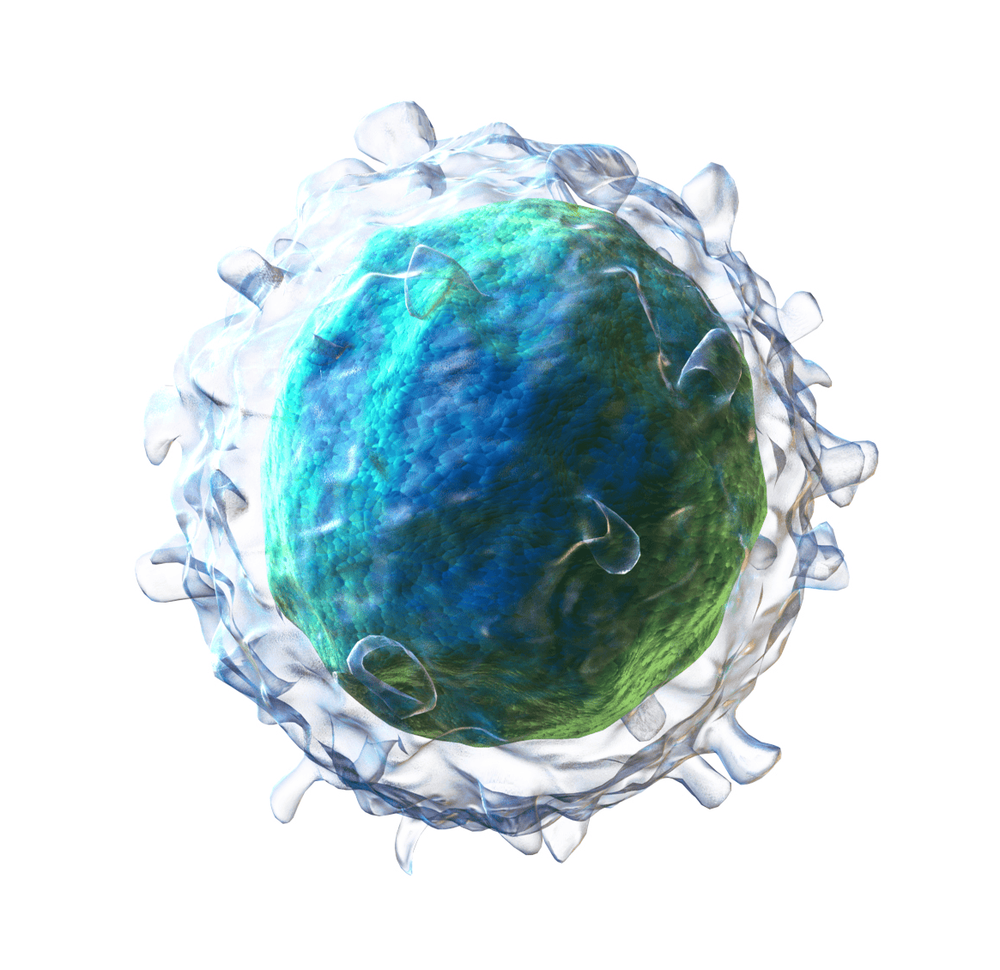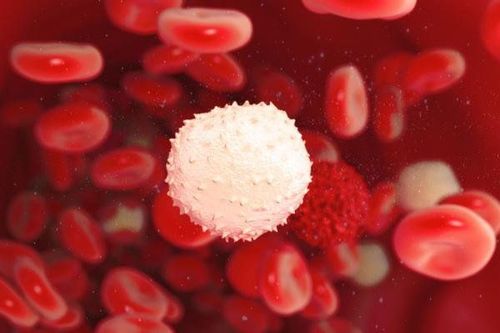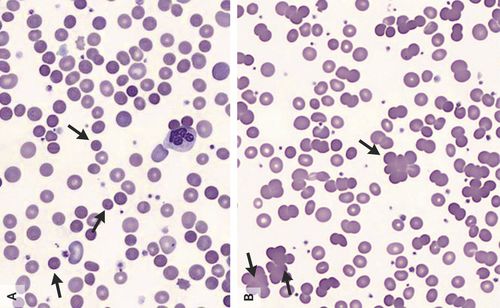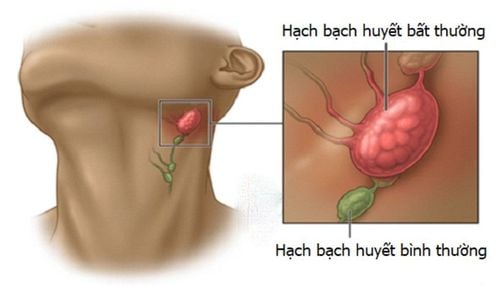This is an automatically translated article.
Lymphocytes are a major type of white blood cell in the body's immune system that fight infections caused by bacteria, viruses, or fungi. Lymphocytes are made from bone marrow and circulate in blood and lymph tissue.1. What are lymphocytes?
Blood circulates in the body through our arteries - veins contain different types of cells, including:
Red blood cells ; Platelet ; Leukocytes. Among them, white blood cells are an important part of the immune system. A person with a weak immune system means they don't have enough white blood cells in their blood. This is a complex network of immune cells that works to protect the body against bacteria, viruses and cancer cells that threaten the body's normal functioning. White blood cells are further subdivided into monocytes, lymphocytes, neutrophils, eosinophils, basophils, and macrophages. Thus, lymphocytes are both a type of white blood cell and part of the immune system.
Lymphocytes are produced in 4 places in the body:
Lymph nodes; Spleen; The thymus is located below the sternum; Bone marrow is located inside large, flat bones.

Trong hệ miễn dịch, tế bào lympho là một phần quan trọng
2. Types of lymphocytes
There are 2 main types of lymphocytes: B lymphocytes and T lymphocytes. Both originate from stem cells in the bone marrow, but some of the cells that migrate to the thymus become T cells. The rest that remain in the bone marrow are B cells. These two types of lymphocytes are:
B cells: Each B cell will work with the immune system to create a certain protein antibody to fight foreign substances entering the body (antigens). Each antibody matches an antigen and is marked for destruction. T cells: Help the body destroy cancer cells by activating other cells in the system and controlling the immune response to foreign substances. T lymphocytes destroy cells that have been attacked by viruses or become cancerous. There is also a third type of lymphocyte, commonly referred to as "Natural Killer Cells" or "NK lymphocytes," that are also produced in the bone marrow. NK lymphocytes respond rapidly to many foreign substances and specialize in fighting cancer and virus-infected cells.

Khi tế bào lympho tăng hoặc giảm bất thường thì đây là dấu hiệu của sức khỏe có vấn đề
3. The number of lymphocytes in the body
A person's usual lymphocyte levels can vary by race, sex, place of residence, and lifestyle habits. In general, the normal number of lymphocytes in the body ranges from:
Adults: From 1,000 to 4,800 lymphocytes in 1 microliter (μL) of blood; Children: From 3,000 to 9,500 lymphocytes in 1 μL of blood. Abnormally high or low lymphocyte counts may indicate an illness.
3.1. High levels of lymphocytes
Above-average lymphocyte counts may be harmless and temporary due to the body's response to inflammation or infection.
But sometimes a high lymphocyte level is also a sign of severe lymphocytosis. Lymphocytosis is often associated with chronic infections, blood cancers, and autoimmune diseases, such as inflammatory bowel disease.
In adults, lymphocytosis usually corresponds to a reading of more than 3,000 lymphocytes in 1 μL of blood. In children, a high lymphocyte count will be around 9,000 units in 1 μL of blood, however this value can vary depending on age.
3.2. Lymphocyte Levels Low
Subnormal lymphocyte counts can also be temporary, occurring after a cold or infection, or from intense exercise, severe stress, or malnutrition.
However, low lymphocyte levels can also be a sign of lymphopenia. This condition can be inherited, or acquired with a number of diseases, including:
Rare hereditary diseases, such as ataxia-telangiectasia Neurological diseases such as multiple sclerosis; Autoimmune disease; AIDS or other infectious diseases Lymphocytopenia can also be a side effect of certain medications or medical treatments. The reduced lymphocyte count will be different for adults and children. Specifically:
Adults: Less than 1,000 lymphocytes in 1 μL of blood; Children: Less than 3,000 lymphocytes in 1 μL of blood.
4. Test for T lymphocytes and B . lymphocytes
Checking the number of lymphocytes in the body is part of a complete blood count (CBC) test. Doctors usually order a CBC if disease or infection is suspected. In some cases, a bone marrow sample may also be used instead of blood.
Results may indicate normal or abnormal lymphocyte counts and indicate a disease. In case of doubt, the doctor will ask the patient to do other tests to confirm the diagnosis.
Some diseases that are associated with abnormal lymphocyte counts are:
4.1. High T-cell count
Sexually transmitted diseases, such as syphilis ; Viral infections, such as infectious mononucleosis; Infections caused by parasites, such as toxoplasmosis; Tuberculosis affecting the lungs and other organs; Leukemia cancer ; Blood cancer starts in the bone marrow.
4.2. High B-cell count
Chronic lymphocytic leukemia; Multiple myeloma; DiGeorge genetic syndrome (deletion 22q11.2); Waldenstrom's macromolecular globulinemia.
4.3. Low T-cell count
A congenital disease; Acquired T-cell deficiency diseases, such as HIV, can progress to AIDS or HTLV-1; A type of cancer.
4.4. Low B-cell count
Acute lymphoblastic leukemia; HIV or a disease that weakens the immune system. In summary, lymphocytes are one of many different types of white blood cells. Each type of cell has a specific function and all work together to help the body fight disease. Abnormally high or low lymphocyte counts are sometimes just a normal response of the body and will return to a stable level after a while. But if the lymphocyte count remains high or low for a long time, it could be a sign of another health condition. Treatment for abnormal lymphocyte levels will depend on both the cause and severity of the patient.
Please dial HOTLINE for more information or register for an appointment HERE. Download MyVinmec app to make appointments faster and to manage your bookings easily.
References in the article: webmd.com, cancer.gov, healthline.com, medicalnewstoday.com
MORE:
B lymphocytes: What you need to know T lymphocytes: What you need to know Risk factors cause chronic lymphocytic leukemia (CLL)













